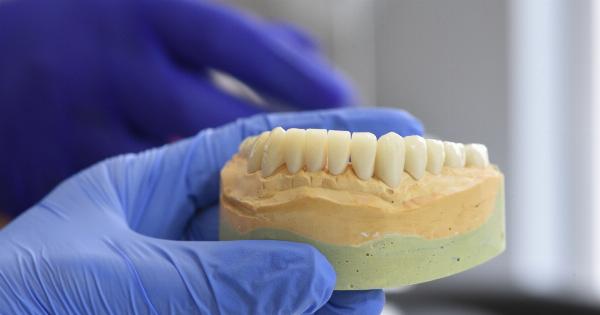Tooth regeneration has long been an intriguing subject for scientists and researchers. Unlike many other tissues, once damaged or destroyed, teeth can’t regenerate themselves naturally.
However, recent studies have revealed the role of proteins in stimulating tooth regeneration. With further research, these proteins may be utilized in developing new strategies for tooth regeneration.
Protein as a Regulator
Proteins play an important role in the regeneration of many tissues and organs in the body. They are essential components of cell signaling pathways that regulate tissue growth and repair mechanisms.
In recent studies, proteins have been identified that stimulate the growth of tooth-forming cells, known as odontoblasts.
One such protein is the fibroblast growth factor 2 (FGF2), which is known to promote the differentiation of odontoblasts in vitro.
This protein is expressed during tooth development, and its high expression levels are associated with increased tooth growth and repair. Additionally, other proteins, such as bone morphogenetic protein 2 (BMP-2), BMP-4, and BMP-7, have also been found to stimulate odontoblast differentiation and tooth regeneration.
Stem Cells and Tooth Regeneration
Stem cells are cells that have the potential to differentiate into many different types of cells in the body. They are an essential component of tissue repair and regeneration mechanisms.
Recent studies have revealed the presence of stem cells in the dental pulp, which is the soft tissue inside the tooth that contains nerves and blood vessels.
Dental pulp stem cells (DPSCs) have been found to differentiate into odontoblasts, which is an essential step in tooth regeneration.
Additionally, studies have shown that several types of proteins, including FGF2 and BMPs, can stimulate the differentiation of DPSCs into odontoblasts.
Protein-Based Tooth Regeneration Strategies
Researchers have been exploring the potential of protein-based strategies for tooth regeneration.
One such strategy involves delivering proteins directly to the site of tooth damage, with the aim of stimulating the growth of new odontoblasts and promoting tooth repair.
Another strategy involves using scaffolds that contain proteins to stimulate the growth of new tissue. These scaffolds act as a framework for the growing tissue and provide an environment that is conducive to tooth regeneration.
Future of Protein-Based Tooth Regeneration
The use of proteins in tooth regeneration holds great promise for the development of new strategies for repairing and regenerating damaged teeth. However, further research is needed to develop protein-based therapies that are safe and effective.
Researchers are also exploring the use of combinations of proteins, as well as other strategies, such as gene therapy, to enhance tooth regeneration.
Overall, the future of protein-based tooth regeneration looks bright, with the potential for new therapies that are less invasive and more effective than current treatment options.



























